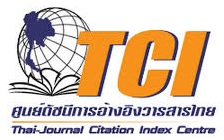A Study of the Relationship between Multiple Intelligences & Grammatical Errors
Keywords:
Chinese EFL learners, grammatical errors, multiple intelligencesAbstract
The purposes of the study were : 1) to make surveys on grammatical errors and multiple intelligences of Chinese EFL learners; 2) to explore the possible relationship between grammatical errors and multiple intelligences; 3) to make a comparison between two groups of the learners about the number of errors after receiving two different kinds of instruction – the control group following undifferentiated instruction ignoring the subjects’ conditions of multiple intelligences, and the experiment group receiving instructioncatering to each subject’s composition of multiple intelligences. The subjects were 74 first year students of English major at Guangzhou Automobile College, China, all enrolled in 2009, belonging to two
classes, which was randomly designated as one control group and one experimental group. The method used in the study was quantitative. The study was conducted through data collection by administering of questionnaire, writing task, and error correction test to all the subjects. Then it was followed with data analysis by examination of frequency distributions of multiple intelligences and grammatical errors, bivariate correlation between the multiple intelligences and grammatical errors, and independent-samples
t test on the two groups of subjects. The study found that among the Chinese EFL learners: 1) the most frequently made grammatical errors was the incorrect usage of lexical verbs; 2) the obvious intelligence displayed in strength was intrapersonal intelligence; 3) the most obvious correlation was a negative one found between visual intelligence and article errors; 4) the experimental group obtaining multiple intelligences based instruction performed better in error correction than the control group which followed undifferentiated instruction.
References
Brown, H.D. (2000). Principles of Language Learning and Teaching. New Jersey: Prentice-Hall.
Chamot, A. (1978). Grammatical problems in learning English as a third language. In E. Hatch (Ed.), Second
language acquisition. Rowley, MA: Newbury House. pp. 175-189.
Cohen, J., Cohen P., West, S.G., & Aiken, L.S. (2002). Applied multiple regression/correlation analysis for the
behavioral sciences (3rd ed.). New Jersey: Lawrence Erlbaum Associates, Inc..
Corder, S.P. (1974). Error Analysis in Allen, J.L.P. and Corder, S.P. (eds) Techniques in Applied Linguistics.
Oxford. Oxford University Press. pp. 122-154.
Crystal, D. (2003). A Dictionary of Linguistics & Phonetics (5th edition). New York: Wiley-Blackwell.
Dulay, H., M. Burt, and S. Krashen. (1982). Language Two. New York: Oxford University Press.
Ellis, R. (1994). The Study of Second Language Acquisition. Oxford: Oxford University Press.
Gardner, H. (1999). Multiple Intelligences: The theory in practice. New York: Basic Books.
Gardner, H., (1983). Frames of mind. The theory of multiple intelligences. New York: Basic Books.
Gupta. V., (1999). SPSS for Beginners. Georgetown: Georgetown University Press
Loredana-Andreea Stancuna & Aneliz-Iulia Craciun. (2011). A multiple intelligences approach: intuitive English
learning – a case study for k – 1 students. Procedia Social and Behavioral Sciences 11, pp. 72–76.
Mahdavy, B. (2008). The Role of Multiple Intelligences (MI) in Listening Proficiency: A Comparison of TOEFL
and IELTS Listening Tests from an MI Perspective. The Asian EFL Journal, September 10, pp. 109-126.
McKenzie, W. (1999). Multiple Intelligences Inventory. Retrievable at the website <http://surfaquarium.com/
Mi/inventory.htm>, 2009.
Murrow, P. (2005). Analysis of Grammatical Errors in Students’ Writing. MCT Journal. No.40, pp.21.
Puchta, H. & M. Rinvolucri. (2005). Multiple Intelligences in EFL. West Sussex: Grafica Veneta.
Richards, J. C. (1971). A Non-Contrastive Approach to Error Analysis. English Language Teaching, 25, No. 3.
Richards, J. C. and G. P. Sampson. (1974). The Study of learner English. Error Analysis: Perspectives on
Second Language Acquisition, ed. J. C. Richards. London: Longman.
Richards, J. C., Rodgers, T. S., (2001). Approaches and Methods in Language Teaching, 2nd ed. Cambridge:
Cambridge University Press, pp.123.
Zeilinger. A. (2011). Q & A: Anton Zeilinger. Discover Magazine. Waukesha: Kalmbach Publishing Co. Vol. 32,
No.6, pp.82.





 ThaiJO
ThaiJO